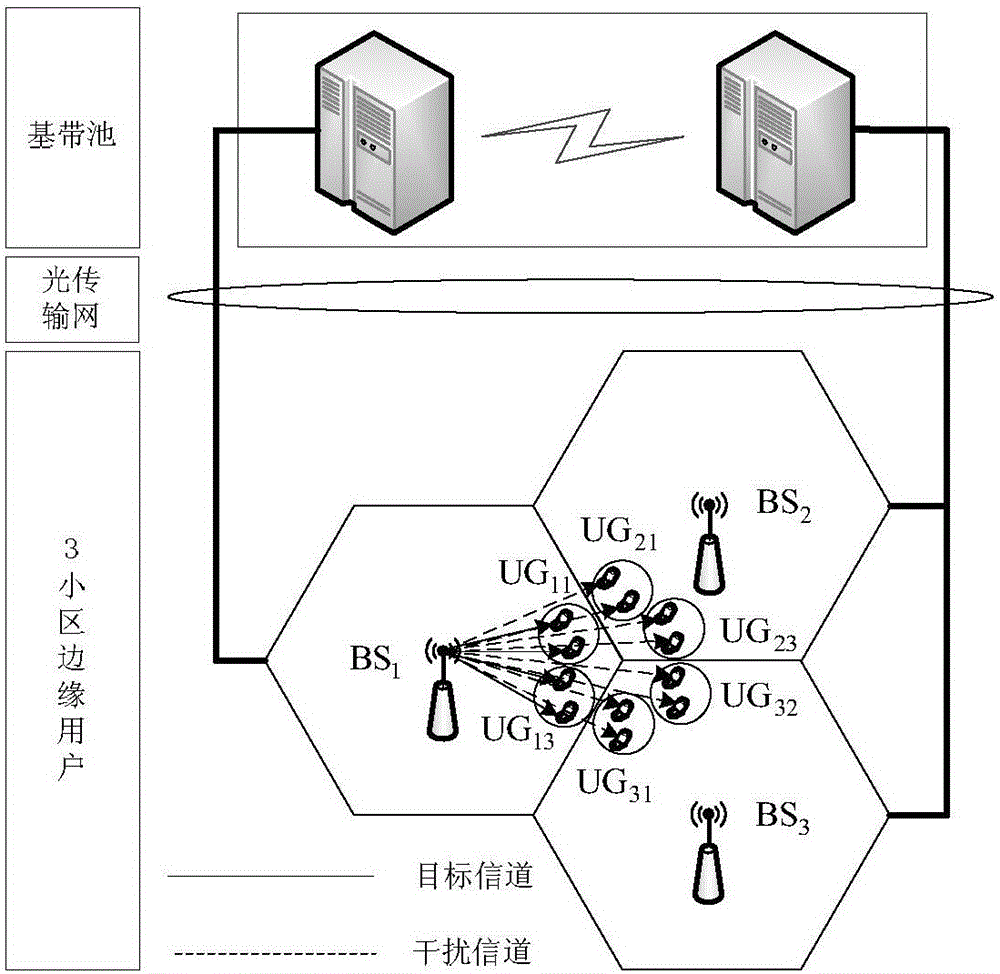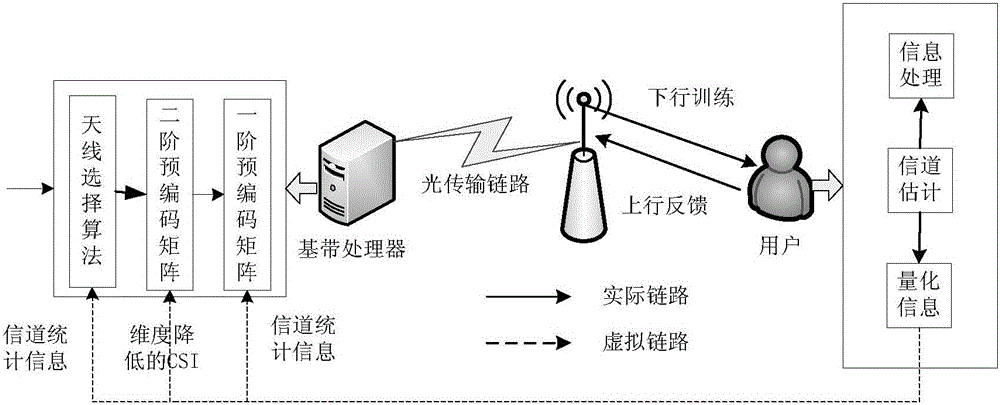Interference elimination and antenna optimization method in multi-cell large-scale MIMO system
A technology of interference elimination and optimization methods, applied in diversity/multi-antenna systems, transmission systems, radio transmission systems, etc., and can solve problems such as increased circuit loss, difficulty in applying massive MIMO systems, and increased number of links
- Summary
- Abstract
- Description
- Claims
- Application Information
AI Technical Summary
Problems solved by technology
Method used
Image
Examples
Embodiment Construction
[0050] A multi-cell massive MIMO system model such as figure 1 As shown, the base stations of the three cells are connected to the baseband pool through the optical transmission network, and the baseband processor centrally processes the signals transmitted by each base station, thereby realizing the acquisition of channel side information between base stations. Each cell edge user is equally divided into two user groups, and each user will suffer from inter-cell interference, inter-group interference and inter-user interference. Consider the Kronecker semi-correlated channel model The users in the cell are grouped, and the interference between users in the group is ignored, and the figure 1 The downlink model transforms into figure 2 model shown. After eliminating inter-cell interference and inter-group interference, the system model is transformed into a broadcast channel model. At this time, the inter-user interference is eliminated through the minimum mean square erro...
PUM
 Login to View More
Login to View More Abstract
Description
Claims
Application Information
 Login to View More
Login to View More - R&D
- Intellectual Property
- Life Sciences
- Materials
- Tech Scout
- Unparalleled Data Quality
- Higher Quality Content
- 60% Fewer Hallucinations
Browse by: Latest US Patents, China's latest patents, Technical Efficacy Thesaurus, Application Domain, Technology Topic, Popular Technical Reports.
© 2025 PatSnap. All rights reserved.Legal|Privacy policy|Modern Slavery Act Transparency Statement|Sitemap|About US| Contact US: help@patsnap.com



